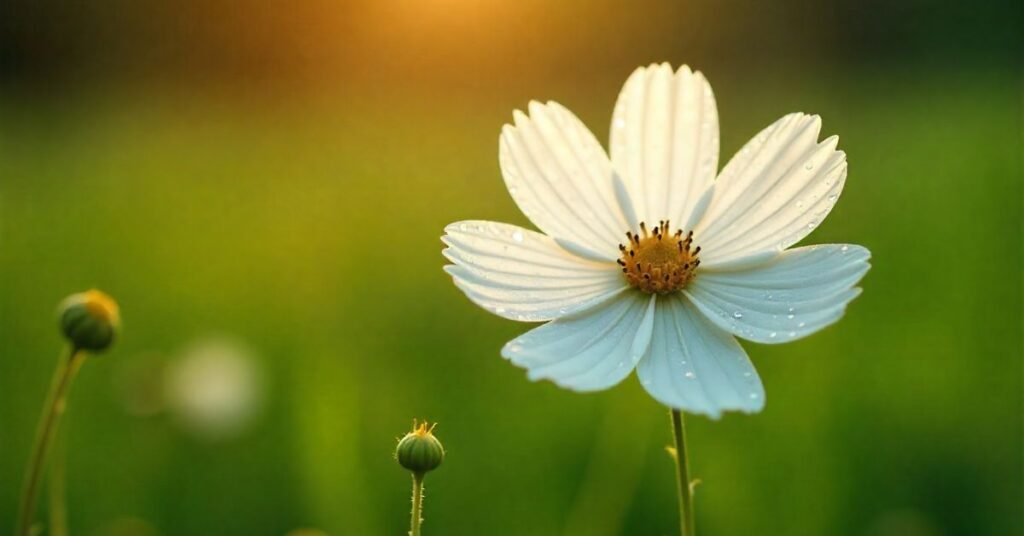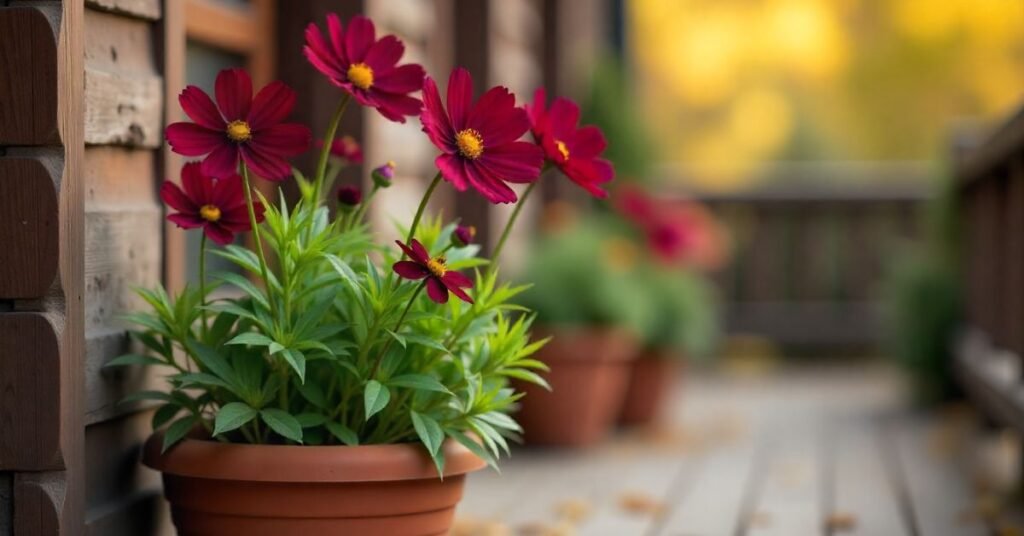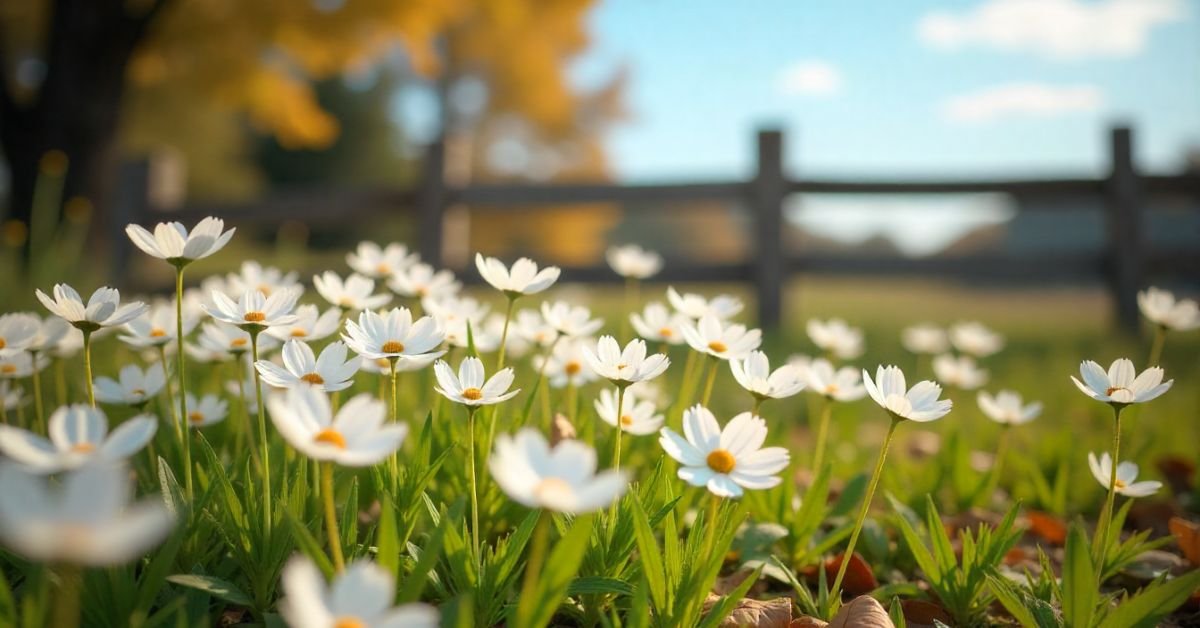Introduction
The Cosmos White Plant is a beautiful annual flower. It is known for its pure white petals and yellow centers. This plant belongs to the daisy family and grows easily in gardens. It is admired for its elegance and ability to brighten any space.
Have you ever wanted a flower that blooms with little effort? The Cosmos White Plant is just that. It grows fast, adapts well, and brings charm to your garden. Its delicate look makes it a favorite among plant lovers.
This plant loves sunlight and well drained soil. It blooms from summer until fall with proper care. The Cosmos White Plant also attracts butterflies and bees, making your garden more lively.
Quick Facts
Here’s a quick overview of the Cosmos White Plant in a simple table format:

| Feature | Details |
| Botanical Name | Cosmos bipinnatus |
| Plant Type | Flowering annual |
| Sun Exposure | Full sun |
| Soil pH | Neutral to slightly alkaline |
| Bloom Time | Summer to fall |
| Flower Colors | Orange, Pink, Purple, Red, White |
| Special Features | Attracts butterflies and songbirds |
Planting Cosmos
Cosmos thrive in well draining soil and do not require heavy preparation. In fact, they prefer soil that isn’t overly rich, as excess nutrients encourage leafy growth instead of flowers. These plants grow best in neutral to slightly alkaline soils with a pH between 7.0 and 7.5.
They are naturally drought tolerant and can withstand hot, dry climates, making them an easy choice for low maintenance gardens.
When to Plant Cosmos
Cosmos are warm season flowers that should be planted after the danger of frost has passed. It is possible to start them directly outside or indoors before transplanting them.
- Direct sowing: Scatter seeds outdoors once frost is no longer a threat.
- Indoor sowing: Start seeds 4 to 6 weeks before your last spring frost in trays or pots with a quality seed starting mix. Transplant them into 5 inch pots when they reach 3 to 4 inches in height.
- Transplanting: Move young plants into the garden after frost danger has fully passed.
How to Plant Cosmos
Seeds should be lightly covered with soil, no deeper than ¼ inch. Once seedlings reach a few inches tall, thin them to 12 to 18 inches apart. Since cosmos varieties range from 18 to 60 inches in height, provide enough room for growth.
If grown from seed, expect the first blooms in about 7 weeks. Once blooming starts, the flowers continue until the first fall frost. Cosmos often self sow if seed heads are left in place, filling your garden with new plants the following year.
Growing and Care
To keep your cosmos blooming and healthy, regular maintenance is helpful. These flowers require little effort but respond well to a few simple practices.
- Deadheading: Remove faded flowers to encourage more blooms and improve branching.
- Support: Tall varieties may need staking or support against a fence to prevent wind damage. Pinching central shoots can also promote bushier growth.
- Watering: Water regularly until established, and during extended dry spells. Avoid overwatering, as it reduces flower production.
- Soil tolerance: Cosmos adapt to dry, sunbaked conditions with ease.
Types of Cosmos Flowers
Cosmos flowers come in a wide variety of colors, shapes, and sizes, making them versatile choices for both borders and companion planting. Below is a table highlighting some popular types and their best pairings.

| Type | Description | Best Companions |
| ‘Picotee’ | Flower petals are white with crimson edges and sometimes flecked with red. | Adds contrast in mixed borders. |
| ‘Sea Shells’ | Unique tube shaped petals in white, pink, or red. | Works well with light and airy garden designs. |
| ‘Purity’ | Classic white blooms that create an elegant look. | Stunning with dark maroon Niger hollyhock or purple basil. |
| ‘Cosmos Sonata Series’ | Compact variety with charming blooms. | Beautiful alongside Bells of Ireland. |
| ‘Chocolate’ | Distinctive deep hued flowers with a rich look. | Pairs nicely with white campanula, dianthus, or ‘Moonshine’ achillea. |
| Tall Cosmos | Grow up to 60 inches; ideal for background planting and filling mixed borders. | With foxgloves, phlox, delphiniums, daisies, poppies, cleomes, or asters. |
| Dwarf Cosmos | Compact types like Ladybird series with bright blooms. | Perfect with zinnias, Johnny jump ups, pansies, alchemilla, or dark blue morning glory. |
Harvesting
Cosmos flowers are easy to harvest. Cut the blooms early in the morning when they are fresh and hydrated. To avoid damaging stems, use clean, sharp scissors or pruners. Pick flowers just as they open for the longest vase life. Remove lower leaves before placing them in water. Regular harvesting also encourages the plant to produce more blooms.
Pests/Diseases
Cosmos are hardy but may face a few common problems. Quick care and prevention help keep them healthy.
| Problem | Description | Solution |
| Stem Canker | Causes dark, sunken spots on stems. | Remove infected parts and avoid overwatering. |
| Powdery Mildew | White powdery coating on leaves. | Improve airflow and avoid wetting leaves. |
| Gray Mold | Fuzzy gray growth on flowers and stems. | Cut off affected areas and reduce humidity. |
| Aphids | Small insects that suck sap from leaves. | Spray with water or use insecticidal soap. |
Conclusion
Cosmos are simple and rewarding to grow. They thrive in poor soil and full sun. With little care, they bloom all summer. Deadhead or harvest often for more flowers. Protect from pests and diseases with basic care. These bright blooms bring lasting beauty to any garden.
FAQs
1. How long does the cosmos take to bloom?
Usually, cosmos bloom within seven weeks of sowing.
2. Do the cosmos need rich soil?
No, they prefer average soil. Rich soil grows more leaves than flowers.
3. Are cosmos flowers drought tolerant?
Yes, cosmos can tolerate dry and hot conditions very well.
4. Should I deadhead the cosmos?
Yes, removing faded flowers encourages more blooms and branching.
5. Do cosmos reseed themselves?
Yes, if seed heads are left, they self sow and return the next season.


